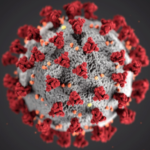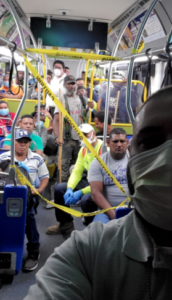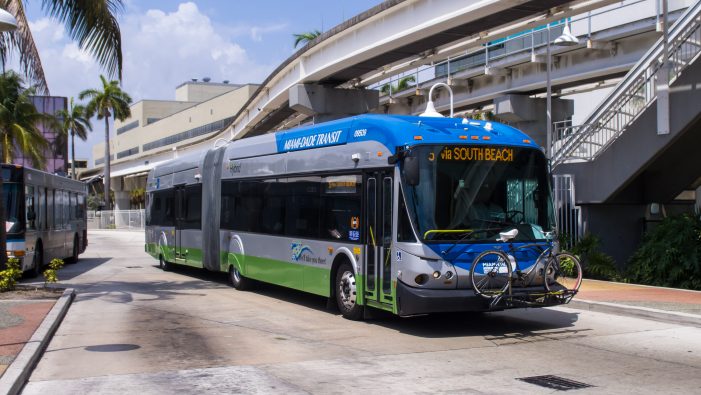Miami-Dade County is finally taking some small steps to control the coronavirus spreading petri dishes that they call buses: providing masks to all employees, limiting the number of passengers allowed on board — signs on the seats will tell riders where they should sit — and suspending low-use routes with overlapping services while adding more buses to the high-demand routes.
About time.
Over the past month, since the beginning of the outbreak of COVID19, bus drivers and train operators have been working without  any protective gear — except the ones who bring their masks from home. They’ve been given one sanitary wipe per shift and had their hand sanitizer bottles filled once a week, according to the workers union president. While the county suspended fares and adjusted routes to the decline in ridership — causing longer waits and more crowds on high-demand routes — it did nothing for its employees. Or for passengers when they increased the cleaning of vehicles to once every night.
any protective gear — except the ones who bring their masks from home. They’ve been given one sanitary wipe per shift and had their hand sanitizer bottles filled once a week, according to the workers union president. While the county suspended fares and adjusted routes to the decline in ridership — causing longer waits and more crowds on high-demand routes — it did nothing for its employees. Or for passengers when they increased the cleaning of vehicles to once every night.
The local Transport Workers Union had to buy 10,000 masks with its own money. And the U.S. Department of Transportation awarded $25 billion from the CARES act funding to transit departments across the country, including almost $455 million to Miami-Dade, to buy help combat COVID19. Ladra wonders if that’s why the county suddenly cares.
Read related: Three Miami-Dade transit workers test positive for COVID19; union wants gear
On Wednesday, the county stepped up and said it was “committed to keeping its most valuable resource — its employees — safe.”
Except there aren’t that many masks. “Employees are being asked to follow CDC guidelines for extended use and limited reuse of  masks,” says a press release from the department.
masks,” says a press release from the department.
“Also beginning this week, Metrobus riders will begin to notice signs on select seats within buses. DTPW is printing and installing thousands of caution signs to urge riders to keep a safe distance between themselves and fellow passengers. Whenever possible, riders should avoid sitting in the specially marked seats.”
Well, what about whenever it’s not possible? Such as the other day, when construction workers were photographed practically on top of each other?
The county “continues to urge riders to use transit for essential trips only,” and is limiting the number of riders on any bus to 16 passengers for 40-foot buses and 36 passengers for the larger 60-foot buses. Ladra is no mathematician, but why are more than twice as many people allowed on a bus that is not twice the size of the first bus? Is that some kind of special Miami-Day County math?
Read related: Stay home for COVID19 — unless you catch a bus, grab a bite, need toilet paper
For those who ride, here are the basic changes:
- Three routes with high demand — the 3, the 11 and the 77 — have had additional trips added to maintain a lower rider count per bus.
- Route 277 was converted to provide local service to supplement route 77. Riders traveling between Golden Glades and Downtown Miami can take either route 277 or 77.
- Route 51 was converted to provide local service to supplement route 11. Riders traveling between 107 Avenue and Downtown Miami, along Flagler Street, can take either route 51 or 11.
Also, five low-ridership routes — the 39, 79, 204, 288, and 95/Golden Glades Express — will be suspended until further notice. Riders can use these alternate routes to get to their destinations:
- Route 39 overlaps with route 31

- Route 79 riders can take route 112/L
- Route 204 users can take route 104
- Route 288 riders can use route 88
- Route 95/Golden Glades Express riders can take route 77 from Golden Glades to Downtown Miami or transfer to Metrorail at Culmer Station.
Download the Go Miami-Dade Transit mobile app to stay up-to-date and track your trip or call 3-1-1 for assistance. For more details on transit services and service adjustments, visit the service updates webpage.

